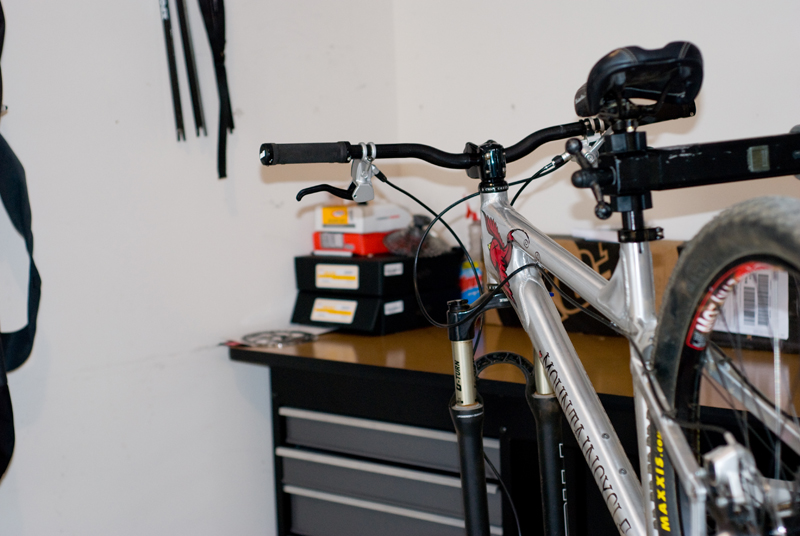Whether you are new to the scene or a veteran of the road or trail, there is absolutely one thing you need to have with you on every ride…a basic understanding of routine maintenance on your bike.
Over the years, I have seen a lot of riders go through the same motions. Everything on the bike seems to be working perfectly, but one day, one shift goes out of place or a brake starts squealing. Instead of trying to fix the issue themselves, it is off to the local bike shop for repair work and the dreaded lead time associated with that. Now, this same rider is missing out on riding (if they only have one bike) and they are spending a lot of time/money trying to get the issue resolved. I believe I know why this happens…
There are a lot of cyclists that have anxiety when it comes to working on mountain and road bikes.
It is paralyzing. They do not want to mess something up so rather than trying to fix the issue themselves…they have someone else do it. Modern day bikes look really complicated on the outside with suspension linkage, swooped carbon frame tubes and logos on every component. Also, not everyone is naturally mechanically inclined that rides, but that is ok. You do not have to be mechanically inclined to work on a bike once you take a look at what your bike really is on the inside.
What is a bike really?
When you break down the bike to it’s core components, it is essentially cables and bolts…nothing more. While everything might look complicated on the outside, the reality is that a bike is not really all that complicated as long as you stay out of suspension rebuilds (which is also far less complicated than it seems), component rebuilds like wheels and hydraulics. The rest of the bike is nothing but a couple of shifting components drawn together by cables and parts simply bolted up to the frame. Those components are then drawn together with sprockets that drive the chain line. When you start to look at the bicycle in those terms instead of what it looks like on the outside, it is a lot more manageable.
When you simplify the components, you also start to realize that there isn’t anything you can royally screw up. What is the worst that can happen if you don’t install a derailleur cable correctly? You are out 5 bucks and you end up taking the bike to the local bike shop anyway? What if you don’t even need to replace the cable and it is just a barrel adjuster (adjusts the tension of the shifting cable)? You can’t screw anything up there!
Why you really need to have basic bike maintenance skills…
While decreased downtime and saving money are great, there is a fundamental reason that every rider should have basic bike maintenance skills.
If you ever plan on riding alone, you need to know how to fix and adjust simple functions on your bike so you are not stuck out on the road or in the middle of the woods. If you have shifting that goes bad, a derailleur that gets hit, road debris that knocks components out of adjustment…anything that you are not expecting, you need to be able to pull off and use a multi-tool to insure you are not walking for miles. You need to be able to fix or repair to the point you can ride as a responsible rider.
Part of what is fantastic about cycling is the ability to get out and explore the mountains or roads that many people do not get to see. This often means extremely low traffic and lack of cell phone coverage. What are you doing to do if something goes wrong and there is no one around to help? With basic knowledge of how your bike works and how to fix things if the worst should happen, you will be able to turn what could have been a terrible situation into a minor annoyance.
How do you get started?
There are a lot of places online that can get you started with tutorials (like our installing suspension fork, adjusting derailleur and brake tutorials). You can also go by your local bike shop and ask for any resources or advice from the mechanics. If you have a really friendly shop or a great relationship with them, you might even get some free tips from the mechanics.
You will also most likely need a simple repair stand in your garage and some simple tools. A simple screwdriver set, set of cable cutters and hex head wrench set will get you by for 90% of what you need to do. There are other specialty tools you can throw into the mix later, but that will get you off and rolling with almost everything. Then you just need to keep an open mind and the willingness to try. It will end up being much easier than you think.
You can also check out these posts for more help.
- Keep Your Bike Running Smoothly
- Make Your Bike Feel Like New
- Clean Your Mountain Bike
- Top 5 Maintenance Skills
- 17 Must Have Tools

